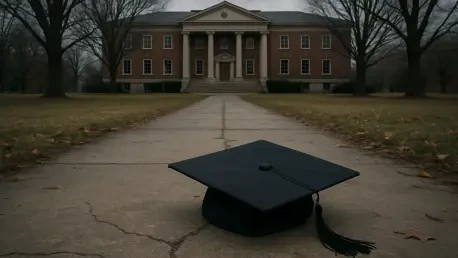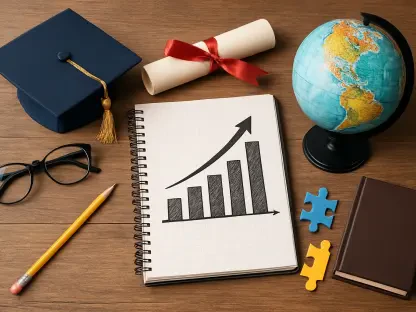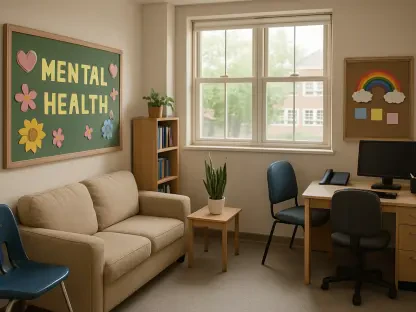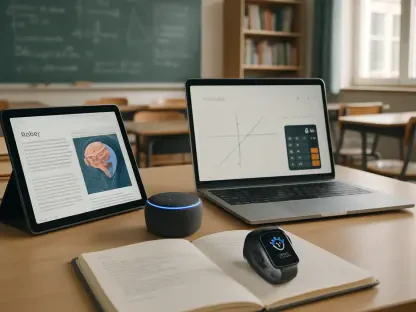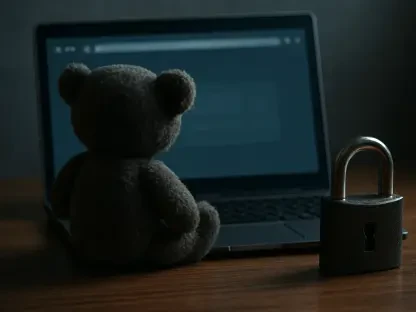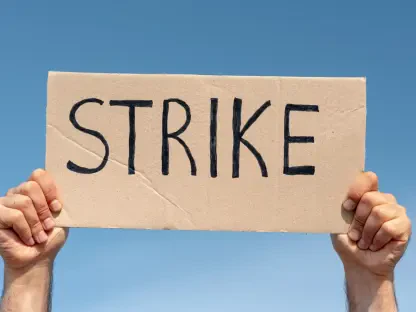A staggering 70% of U.S. adults now believe that higher education is heading in the wrong direction, a sharp rise from just 56% in 2020, according to a recent survey by a leading research organization conducted among 3,445 participants, painting a vivid picture of widespread disillusionment. This alarming statistic highlights a growing skepticism toward colleges and universities, once heralded as gateways to opportunity. What drives this trend? From skyrocketing tuition to doubts about job readiness and ideological concerns, public trust is eroding across diverse demographics. This roundup gathers insights, critiques, and proposed solutions from various experts, educators, and industry voices to explore why confidence is waning and what can be done to rebuild it.
Examining the Roots of Discontent
Affordability Crisis Under Scrutiny
A dominant concern among the public is the affordability of higher education, with nearly eight in ten Americans rating colleges poorly on managing tuition costs. Financial analysts point out that the burden of student loan debt has become a generational issue, often outweighing the perceived benefits of a degree. Many argue that institutions prioritize revenue over accessibility, leaving students and families grappling with unmanageable expenses.
Educators, on the other hand, acknowledge the strain but highlight systemic funding challenges, such as declining state support for public universities. They suggest that without significant policy intervention, costs will continue to spiral. Some propose innovative models like income-share agreements as a way to ease the financial load on students.
This divide in perspectives underscores a critical tension: while the public demands affordability, the mechanisms to achieve it remain contentious. Industry observers warn that if costs aren’t addressed, enrollment declines—already evident in recent years—will accelerate, further straining institutional budgets.
Job Readiness and Skills Gap Debate
Another major grievance centers on whether colleges prepare students for the workforce, with over half of surveyed Americans expressing doubts about graduates securing well-paying jobs. Employers from tech and manufacturing sectors frequently note a mismatch between academic training and practical skills, often citing a lack of adaptability among new hires.
In contrast, some academic leaders argue that the purpose of higher education extends beyond vocational training, emphasizing the importance of critical thinking and broad-based learning. They contend that employers share responsibility for on-the-job training rather than expecting universities to deliver fully formed professionals.
Balancing these views, a growing number of career counselors advocate for hybrid programs that blend liberal arts with targeted technical skills. Such initiatives, they argue, could bridge the gap between academic ideals and market demands, ensuring graduates are both thinkers and doers.
Ideological Bias and Campus Culture Concerns
Public unease also stems from perceptions of limited intellectual diversity on campuses, with nearly half of respondents feeling that students aren’t exposed to a wide range of viewpoints. Conservative commentators often criticize academia for leaning too heavily toward progressive ideologies, claiming this stifles open debate and alienates certain groups.
Progressive educators counter that campuses remain spaces for challenging norms and fostering inclusion, though they admit that balancing free speech with safe environments is complex. They point to efforts like hosting diverse guest speakers as steps toward broader dialogue, though implementation varies widely across institutions.
A middle ground emerges from student advocacy groups, which call for transparent policies on discourse and accountability for fostering inclusivity. These voices stress that rebuilding trust requires campuses to visibly commit to intellectual openness, addressing perceptions of bias head-on.
Political Polarization Shaping Opinions
Political divides significantly color views on higher education, with negative sentiments rising among both Republicans (77%) and Democrats (65%) since 2020. Analysts focusing on political trends suggest that Republican distrust often ties to perceptions of liberal dominance in academia, while Democrats express frustration over access and equity issues.
Policy experts highlight how political rhetoric, including past governmental actions like proposed funding cuts over ideological disputes, amplifies public skepticism. They note that such moves can overshadow substantive critiques, making bipartisan reform challenging in a polarized climate.
Some civic leaders propose depoliticizing the conversation by focusing on shared goals like affordability and outcomes. They argue that reframing higher education as a public good, rather than a partisan battleground, could pave the way for collaborative solutions.
Pathways to Rebuild Trust
Insights from this diverse pool of opinions reveal a consensus on core issues: tuition costs, job preparation, and ideological concerns must be tackled urgently. Financial reformers push for bold policy changes, such as increased public funding or debt relief, to make education accessible. Simultaneously, career advisors emphasize the need for curricula that align with evolving industry needs, citing successful partnerships between colleges and businesses as models.
On cultural and political fronts, campus administrators and student leaders suggest fostering environments where diverse perspectives are not just tolerated but actively encouraged. This includes revising policies on speech and engagement to ensure all voices are heard. Additionally, a positive note persists—over half of Americans still value higher education’s contributions to research and innovation, a foundation to build upon.
These varied perspectives collectively point to a multifaceted approach for reform. Educational consultants stress the importance of transparency, urging institutions to communicate clearly how they address public concerns. By integrating affordability, relevance, and openness, stakeholders believe higher education can regain its standing as a trusted pillar of society.
Reflecting on the Insights Gathered
Looking back, this roundup of views illuminated the depth of public dissatisfaction with higher education, driven by financial barriers, doubts about practical outcomes, and cultural-political tensions. The discussions captured a shared urgency among experts, educators, and industry voices to confront these challenges directly. Differing opinions, from employers critiquing skills gaps to academics defending broader learning, enriched the dialogue, revealing no single fix but a spectrum of potential reforms.
Moving forward, actionable steps emerged as critical. Institutions should prioritize partnerships with industries to enhance job readiness, while policymakers could explore funding models that alleviate student debt. For those eager to dive deeper, exploring reports on enrollment trends or innovative campus policies offers valuable context. Engaging with local colleges to advocate for change remains a practical way to influence this evolving landscape, ensuring higher education adapts to meet contemporary needs.
